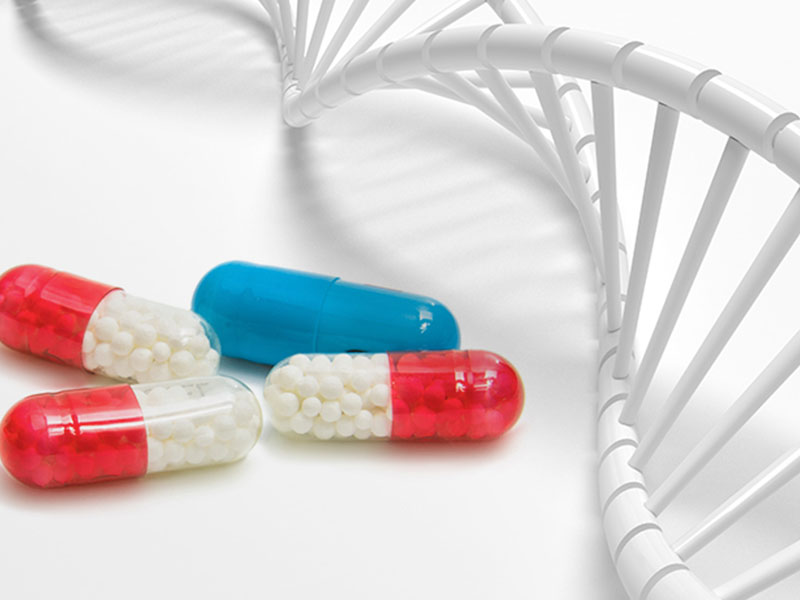Nucleic acid drugs, also known as nucleotide drugs, mainly work at the gene level. Nucleic acid drugs can directly act on the molecules that cause diseases, and relieve the symptoms of diseases by regulating body functions without manipulating the genome, and have shown unique effects in anti-virus, anti-tumor, and anti-metabolic disorders.
At present, there are 16 nucleic acid drugs approved for marketing in the world, including 14 small nucleic acid drugs (3 of which have been withdrawn from the market) and 2 mRNA vaccines. It covers the fields of antiviral, antitumor or cardiology and metabolic diseases, liver diseases and many rare diseases. The successful commercialization of small nucleic acid drugs and the brilliance of mRNA drugs in the new crown epidemic have made nucleic acid drugs considered “the third wave of pharmaceuticals other than small molecule drugs and antibody drugs.” Although the nucleic acid drug industry at home and abroad is in full swing and showing an explosive trend, there are still technical barriers to be solved urgently in the nucleic acid drug industry, and its instability, immunogenicity, low cell uptake efficiency, and difficulty in endosome escape all limit the development of nucleic acid drugs. Effectiveness as a new treatment modality. Here, the R&D challenges of small nucleic acids and mRNA are exemplified.
mRNA Drug Discovery Challenges
1 mRNA Design Sequence Optimization
Both coding and non-coding sequences can be optimized. The translation efficiency of mRNA can be improved by optimizing the coding sequence. Optimizing noncoding sequences can also increase translation efficiency and mRNA stability, but the sequence optimization process requires specific techniques and experience.
2 Nucleoside Modifications
The immune system can recognize unmodified single-stranded RNA, resulting in decreased protein expression and reactogenicity. It can improve translation efficiency by introducing modified nucleotides. The most commonly used modified nucleoside, N1-methylpseudouridine, requires Patent licensed.
3 Difficulty Of mRNA Delivery
Because of its large molecular weight and negative charge, mRMA has difficulty penetrating the lipid bilayer of the cell membrane, which is also negatively charged. In addition, mRNA guests are easily phagocytized by immune system cells and degraded by nucleases, and there are problems such as intracellular release. Therefore, the preparation of personalized cancer vaccines still faces the problem of choosing a delivery system.
4 Synthetic Design Of LNP Delivery System
Lipid nanoparticle (LNP) is currently the most advanced mRNA delivery carrier in clinical practice, with high feasibility and patentability. However, it is necessary to optimize the synthetic design to solve its own toxicity and easy aggregation and leakage.
5 mRNA Purity

The purity of mRNA has a great influence on the efficacy and safety. In the production process, it is necessary to develop efficient purification methods to improve the purity of mRNA and remove impurities such as double-stranded RNA, truncated mRNA, and DNA.
6 Consistency Of Particle Size
The consistency of mRNA particle size can improve the stability of LNP delivery system.
7 Encapsulation Efficiency
In mass production, specific encapsulation technology can improve encapsulation efficiency, ensure stable quality and save production cost.
Small Nucleic Acid Drug Development Challenges
1 Poor Targeting Specificity And low drug delivery efficiency
Insufficient targeting ability leads to low concentration of small nucleic acid drug at the target site, forcing higher dosage.
2 Off-target Toxicity
Toxicity caused by binding of small nucleic acid drugs to non-target RNA or potential toxicity caused by enrichment in non-target organs or tissues.
3 Immune-Mediated Toxicity
Immune response-mediated toxicity comes from the recognition of T exogenous small nucleic acids by receptors such as PKR, TLR3, and TLR7.
4 Nanoparticle-Mediated Toxicity
Potential toxic effects can be elicited by the nanodelivery components themselves or degraded components.
5 Poor Serum Stability
Naked RNA is easily degraded by nucleases in plasma and tissues, or rapidly filtered out by the kidneys, making small nucleic acid drugs circulate in the body for a very short time.
6 Low Tissue And Cell Penetration
Due to the negative charge on the surface, naked RNA cannot freely pass through the cell membrane, making it difficult to enter the cell.
7 Intracellular Traffic And Endosome Escape
After entering the cell, the small nucleic acid drug is easily trapped in the endosome and cannot be released into the cytoplasm to play a role, and the release of the small nucleic acid drug only lasts for a relatively short time window after entering the cell.
8 RNA Chemical Modification Methods Are Strictly Required
The binding of small nucleic acid drugs to intracellular proteins follows a strict mechanism, and the modification of RNA needs to maintain its original functional properties.
9 The Large-Scale Production Of Drugs Is Difficult
In the production process of small nucleic acid drugs, all kinds of raw materials and equipment used need to have large-scale production capacity to realize the commercialization of products. In the process of expanding production, it is necessary to consider many aspects such as product quality, production speed and cost, and there are strong restrictions. Other challenges, such as patent disputes, over a hundred components in the supply chain, make people overwhelmed; mutated strains make it difficult to predict the direction of the entire epidemic; whether the approval system and payment system are sufficient to support the industrialization of nucleic acid drugs have brought difficulties to the development of nucleic acid drugs.










